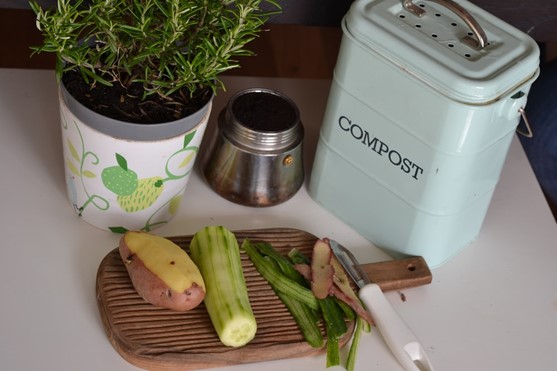12 Ways to Make Your Home More Eco Friendly
Across Australia, people are becoming more aware of living as sustainably as possible. While many of us do the basics such as recycling rubbish, limiting single-use plastic, and ‘donating not dumping’, not many people look at the broader picture. Now more than ever, there are so many cost-effective ways to reduce your home’s carbon footprint that will go a long way to saving the Earth’s resources. Here are 12 ways that you can easily make your home more eco-friendly.
1) Install energy-efficient lightbulbs
Energy-efficient lightbulbs have had a bad rap from consumers who complain they don’t throw off enough light or take too long to warm up. However, advances in technology have made energy-efficient lightbulbs just as effective as traditional lightbulbs, as well as using far less electricity. As a bonus, energy-efficient light bulbs don’t need to be replaced as often. Speak to a local electrician about installing energy-efficient lightbulbs or LED lights in your home.
2) Install solar panels
Installing solar panels is essential to create an eco-friendly home. They are a long-term investment, so although there will be an initial financial outlay, you could potentially save more money than you spend in the long term. Some people are lucky enough to find that their solar panels make enough electricity to allow the household to go completely off-grid.
3) Insulate your home
Installing proper insulation is one of the best things you can do to make your home eco-friendly. A well-insulated home holds a consistent temperature far better than a home without the proper insulation. When your home is adequately insulated, you’ll use far less energy heating it and cooling it. A good place to start is by insulating your roof, speak to a local roofing expert for advice for to arrange a quote.
4) Choose water-based paints
Most paints used in home decorating are oil-based and not as eco-friendly as water-based versions. When decorating, choose water-based paints that contain natural pigments.
5) Double glaze your windows
Gone are the days of unsightly double glazing – with today’s technological advancements in this field, it is tough to tell the difference between traditional glass and double glazed.
However, you will notice the difference in energy expenditure when you double glaze as these windows can cut your power bills significantly. By installing double glazed windows, you will be able to save money in the long run and keep your home well insulated.

6) Opt for thicker curtains
You can further insulate your windows by installing heavy curtains to keep out the heat in summer and cold in winter. They can be a great energy conserver by not letting outside air in through the windows, so long as you remember to close them before the temperature outside becomes uncomfortable.
7) Install underfloor heating
There are several ways in which underfloor heating is much more environmentally friendly than other options on the market because:
- It operates at a lower temperature;
- It regulates temperatures more efficiently in large areas; and
- It heats rooms faster than other methods.
When you install underfloor heating in your home, you’ll reduce your carbon footprint by using less energy.
8) Use green cleaning products
Your favourite cleaning products might work well, but they might also be contributing to your carbon footprint, not to mention that they are harmful to the environment. Once they’re flushed down the drain, they go into the water system and are either flushed out into the ocean to pollute our waterways or are purified at a water treatment centre that takes a great deal of energy to run.
There are some simple changes you can make. Bicarb soda, lemon juice or vinegar can all be used instead of bleach and detergent to kill bacteria. Switching to steam cleaners to disinfect and kill germs is another green way of keeping homes clean. When you steam clean, you don’t need to use any cleaning products at all!
9) Compost your food waste
If you don’t already compost your food waste, you’d be surprised by how much of your weekly rubbish is made up of waste that you can easily put to good use. Scrape any leftover or old compostable food scraps into a compost bin and simply leave them to rest. Over time it will turn into useful compost that can be used in the garden.

10) Buy recycled or used furniture
New furniture is becoming less and less sustainable as it is made from non-sustainable materials and is, frankly, not built to last. When your latest coffee table succumbs to pressure, think about buying a recycled piece. Older pieces of furniture are often far more durable than the newest products, and with a quick sanding or reupholstering, you’ll have a new table or chair that will service your family for years.
Alternatively, seek out furniture made from recycled materials. You’ll still be getting a brand-new product, but it’s been made thoughtfully from materials that might otherwise have gone to landfills or been thrown away.
11) Invest in eco appliances
When it comes time to replace your appliances, seek out eco-friendly options. Appliances such as rice cookers, kettles, microwaves, dishwashers, toasters, and blenders use a surprising amount of energy. Therefore, making a switch to something designed to use less energy and made from sustainable materials will help you make your home more eco-friendly.
In the meantime (because you don’t want to throw away functional appliances!), use your existing appliances mindfully. For example, if you’re making just one cup of tea, don’t fill the kettle to the brim. It’ll boil quicker and use far less energy to boil just one cup of water than it will to boil eight.
12) Install a slow-flow showerhead
While showering undoubtedly saves water compared to having a bath, you still use almost 20 litres of water every minute when you use an older-style shower head. By replacing your existing showerhead with one that is energy efficient, you can cut your water usage down by more than half!
Don’t forget; a showerhead can only do so much. Make mindful changes to your shower routine by cutting your time under the water and turning off the shower when lathering up.
There are so many ways to improve the carbon footprint of your home. By living mindfully and making environmentally friendly choices, you can steadily make your home more eco-friendly. Call Jim’s Group on 131 546 to arrange a quote for any of the services listed in this article.
Related Jim’s Group News
– 7 Ideas for Hosting a Children’s Party at Home.
– Christmas Gift Ideas for Mum.





